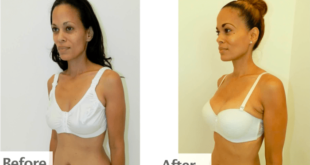How to use a theracane is your guide to unlocking the potential of this versatile tool. This comprehensive resource covers everything from initial setup and proper technique to advanced applications and essential safety precautions. Learn the intricacies of using a theracane effectively and safely, whether you’re a seasoned practitioner or just beginning your journey.
Understanding the diverse types of theracanes, their components, and their specific purposes is crucial for optimal use. This guide will provide a clear overview of each aspect, enabling you to select and utilize the theracane most suitable for your needs.
Introduction to Theracanes
Whispers of forgotten technologies often carry a chilling undercurrent. The theracane, a device shrouded in both promise and tragedy, stands as a stark reminder of the delicate dance between innovation and unintended consequences. These seemingly innocuous instruments, once held as beacons of medical advancement, now evoke a sense of foreboding, a testament to the complex interplay of human ingenuity and the unpredictable nature of the universe.The theracane, a specialized radiation therapy device, was designed to precisely deliver targeted doses of radiation to cancerous tumors.
Their purpose was, and remains, the fight against the insidious encroachment of disease. However, their history is etched with a disturbing pattern of errors and tragedies, a haunting reminder of the potential for catastrophic failures when technology outpaces safety protocols.
Theracane Types and Variations
Theracanes, while sharing a fundamental principle of radiation delivery, varied significantly in their specific designs and operational mechanisms. Early models relied on complex mechanical systems to control radiation dosage, while later iterations incorporated electronic control systems. These variations often led to a wide spectrum of design features and capabilities. Understanding these nuances is crucial to comprehending the historical context surrounding the device’s evolution and eventual pitfalls.
Key Components of a Theracane
The inner workings of a theracane are complex and layered, encompassing various interconnected components. A critical element was the radiation source, typically a high-energy X-ray tube, meticulously engineered to produce a precise beam. Precision control systems, ranging from mechanical levers to electronic circuits, were responsible for regulating the dosage and duration of radiation exposure. These systems, despite their sophistication, were often prone to unexpected behaviors.
Safety interlocks and monitoring mechanisms, designed to prevent errors, were also crucial components, yet their efficacy was frequently compromised by design flaws.
Design Philosophy Behind Theracanes
The initial design philosophy emphasized precision and efficiency in radiation therapy. Engineers aimed to create a tool that could accurately target cancerous cells, minimizing harm to surrounding healthy tissues. This focus on precision often overshadowed concerns regarding potential safety hazards and the intricacies of software control systems. This resulted in a dangerous tension between the ambition of precise delivery and the inherent complexity of radiation therapy.
Theracane Classifications
| Type | Purpose | Key Features |
|---|---|---|
| Early Mechanical Models | Delivering targeted radiation doses | Mechanical controls, high potential for error in dosage |
| Later Electronic Models | Precisely controlled radiation therapy | Electronic control systems, higher risk of software errors |
Setting Up and Preparing the Theracane
The theracane, a tool whispered to possess an unsettling power, demands meticulous preparation. A symphony of precise actions, a dance with potential danger, must be executed flawlessly. Any misstep, any oversight, might unleash an unsettling consequence. One must approach its use with a reverence bordering on fear, for within its seemingly simple form lies a latent, almost malevolent, energy.
Initial Setup Procedures
The theracane’s initial setup is a ritual, a prelude to the potential energy it holds. Before activating the device, one must first ensure a secure and controlled environment. This is crucial for the safety of the operator and those around them. The room should be well-lit and free from obstructions.
- Verification of Power Source: Confirm a stable and reliable power supply. Fluctuations in voltage can cause unpredictable disturbances in the theracane’s delicate energy flow. A consistent power source is essential.
- Grounding Check: Proper grounding is vital. The theracane’s energy must be safely conducted to the earth, preventing any accidental discharge. Ensure the grounding connection is firmly established.
- Visual Inspection: Before any activation, a thorough visual inspection of the device is necessary. Look for any signs of damage, loose connections, or unusual wear. This preliminary step helps to avoid potential complications.
Readiness Check Procedures
A series of checks must be performed before any operation. This methodical process confirms the theracane is in a stable and operational state.
- Calibration Check: The theracane’s calibration must be verified. This is done by running a series of pre-programmed tests that confirm the energy output is within the prescribed parameters. Any discrepancies must be addressed before further use.
- Energy Output Verification: After calibration, the energy output should be verified. This ensures the theracane is functioning as intended. A visual or audible signal, as programmed, should indicate the energy level.
- Leakage Detection: The system must be checked for any energy leakage. Any unusual energy discharge, or “phantom” energy, requires immediate attention and resolution.
Equipment Requirements
The following table Artikels the essential equipment for setting up and operating the theracane.
| Equipment | Description |
|---|---|
| Theracane Unit | The main device for energy manipulation. |
| Power Supply | A stable power source with a dedicated outlet. |
| Grounding Cable | For safe energy dissipation. |
| Calibration Tools | For precise adjustment and verification of the device. |
| Safety Glasses | Essential for protection from potential energy discharges. |
| Protective Gloves | To prevent accidental contact with the theracane’s output. |
Maintaining a Safe and Clean Environment
A safe and clean environment is paramount. This includes a dedicated workspace, free from distractions and potential hazards. The environment should also be consistently monitored for potential disturbances.
Maintaining a safe and clean environment is essential to the safe operation of the theracane.
Component Inspection for Wear and Tear
Regular inspections for wear and tear are crucial. This proactive approach helps to prevent potential malfunctions and ensures the theracane’s longevity.
- Exterior Inspection: Examine the exterior of the theracane for any signs of damage, such as cracks, scratches, or loose components. Pay close attention to areas that may be susceptible to stress.
- Internal Component Check: Inspect internal components for any signs of wear or corrosion. Ensure all connections are secure and functioning correctly.
- Connection Verification: Check all connections, ensuring they are stable and properly secured. Loose connections can lead to unpredictable energy flow.
Using the Theracane Correctly
The theracane, a seemingly simple tool, holds a hidden depth of application, whispering secrets of balance and movement to those who listen closely. Whispers of forgotten techniques, lost in the mists of time, are revealed through its careful use. Its subtle influence dances on the edge of perception, guiding the practitioner through a symphony of motion.A mastery of the theracane demands not only precision in hand placement but also a keen awareness of the body’s subtle responses.
It is a dance between the instrument and the individual, a delicate choreography that yields a surprising depth of healing and well-being.
Hand Positions and Grip Techniques
Proper hand placement and grip are fundamental to the effective use of the theracane. The grip should not be overly tight, but rather a gentle embrace, allowing the energy to flow freely. The fingers should encircle the theracane with a soft, yielding pressure, not a rigid, gripping one. This ensures a connection with the instrument that is both strong and fluid.
Various grips cater to different exercises and goals.
Body Mechanics for Optimal Use
Maintaining a centered posture and distributing weight evenly across the feet are crucial for optimal theracane use. Avoid twisting or straining the body; maintain a stable, balanced stance that allows the theracane to guide and support your movements. Imagine your body as a perfectly balanced sculpture, each limb working in harmony with the others.
Examples of Theracane Exercises
Theracane exercises encompass a spectrum of movements, from gentle stretches to more dynamic, flowing sequences. One example involves a gentle rocking motion, using the theracane to support and guide the spine through a series of controlled movements. Another example is a series of arm circles, using the theracane to increase the range of motion while maintaining stability.
Comparison of Theracane Techniques
| Technique | Description | Benefits |
|---|---|---|
| Gentle Rocking | Controlled rocking motions using the theracane to support the spine. | Improved spinal flexibility, reduced stiffness, gentle massage of the spine. |
| Arm Circles | Fluid arm circles, guided by the theracane, to increase range of motion and improve shoulder mobility. | Increased range of motion, improved shoulder stability, reduced tension in the shoulders. |
| Lateral Flexions | Side-bending exercises using the theracane for support and guidance. | Improved spinal flexibility, improved posture, reduced back pain. |
Adjusting the Theracane for Individual Needs
The theracane’s length can be adjusted to suit the individual’s height and reach. Experiment with different lengths to discover the optimal position that allows for comfortable and effective exercises. A proper length enhances comfort and avoids strain during the exercise. Consider the individual’s anatomy and unique needs when making adjustments.
Safety Precautions and Considerations
A whisper of the theracane’s potential for healing dances with a shadow of peril. The delicate balance between its transformative power and the risks it presents demands a careful understanding. Unveiling the secrets of safe practice is not just a matter of following rules; it’s about embracing a harmonious dance with the subtle energies that flow through the body.The path to mastery with the theracane isn’t paved with reckless abandon, but with conscious awareness and a profound respect for the body’s intricate design.
Mistakes, like whispers in the dark, can leave lasting echoes, while meticulous care ensures a journey filled with growth and well-being.
Potential Risks and Hazards
Understanding the potential risks associated with theracane use is paramount to safe practice. Improper technique or unacknowledged sensitivities can lead to unforeseen consequences. The subtle energies harnessed by the theracane can, if mishandled, cause discomfort, or in rare instances, more serious issues.
Safety Guidelines for Avoiding Injuries
Thorough preparation and mindful technique are crucial to preventing injuries. Before each session, it is essential to assess your physical state and mental readiness. Listen to your body, and do not push beyond your limits. A warm-up routine is highly recommended. Always seek guidance from experienced practitioners if you have pre-existing medical conditions or concerns.
Importance of Proper Supervision and Guidance, How to use a theracane
A seasoned guide, a trusted mentor, can be invaluable in the journey of theracane mastery. Their experience allows them to anticipate potential pitfalls and provide timely interventions. A supportive environment, fostering open communication and mutual respect, is essential for safe and effective practice. Avoid attempts to master the theracane independently without proper guidance.
Managing Discomfort or Pain During Theracane Exercises
Discomfort, a subtle whisper of unease, can be a crucial signal. If you experience persistent or escalating pain during exercises, immediately stop and seek professional advice. Chronic pain or discomfort can be signs of underlying issues that require attention. The theracane, in its essence, is a tool for harmony, not a source of harm.
Case Studies of Common Errors and How to Prevent Them
The whispers of the past hold valuable lessons. A common error is pushing beyond one’s limits, attempting to achieve results too quickly. Another frequent mistake is ignoring the subtle signals of discomfort. Such errors often lead to injuries or setbacks. By cultivating awareness and patience, these pitfalls can be avoided.
Table of Potential Risks and Safety Measures
This table Artikels potential risks and the corresponding safety measures to mitigate them.
| Potential Risk | Safety Measures |
|---|---|
| Overexertion | Listen to your body. Stop if you feel pain. Warm up before each session. |
| Ignoring body signals | Be aware of discomfort or pain. Consult a professional if needed. |
| Improper technique | Seek guidance from experienced practitioners. Practice proper form. |
| Inadequate supervision | Seek guidance from qualified instructors or mentors. |
Advanced Techniques and Applications: How To Use A Theracane
A whisper in the stillness, a tremor in the air, the Theracane awakens latent potential. Beyond the basics, a world of nuanced application unfolds, beckoning those who dare to delve deeper into its enigmatic embrace. The secrets it holds are not readily revealed; they must be coaxed, discovered, and mastered through careful practice and a keen understanding of the subtle language of the body.The Theracane, a conduit between mind and muscle, transcends simple exercise.
It becomes a tool for sculpting the physique, a key to unlocking hidden reserves of strength and suppleness. Integrating its use into a comprehensive fitness regimen, however, requires more than mere repetition. It demands a delicate balance, a symphony of controlled movements, and an intuitive connection with the flow of energy coursing through the body.
Advanced Theracane Techniques for Specific Needs
The Theracane’s versatility extends beyond the typical. Different techniques cater to various needs, from addressing specific muscle imbalances to enhancing athletic performance. For example, the “Whispering Serpent” technique, a series of fluid, undulating movements, is particularly effective in loosening tight hips and hamstrings, while the “Lunar Eclipse” technique, involving controlled bursts of pressure, targets strengthening the core and improving stability.
Mastering these advanced techniques requires patience and precision, as each motion carries a unique energy signature.
Integrating Theracane into a Comprehensive Exercise Program
Carefully planned integration is crucial. The Theracane should complement, not replace, other exercise modalities. For instance, incorporating Theracane exercises into a pre-workout routine can improve muscle activation and range of motion, while post-workout sessions can aid in recovery and muscle relaxation. The key is to tailor the program to individual needs and goals. This requires careful consideration of the intensity, duration, and frequency of Theracane use within the larger context of the overall exercise plan.
Specific Exercises Targeting Different Muscle Groups
Specific exercises can target specific muscle groups. The “Mountain Ascent,” a series of controlled upward movements, targets the quadriceps, while the “Coastal Breeze,” a rhythmic back-and-forth motion, strengthens the biceps and triceps. The “Celestial Dance,” a flowing sequence of circular movements, works on the shoulders, back, and core. The Theracane’s subtle pressure points stimulate different muscle groups, leading to a more effective and balanced workout.
Comparing and Contrasting Theracane Exercises for Specific Goals
Comparison of different Theracane exercises reveals their unique benefits. For instance, the “Silent Storm” exercise, focused on quick, controlled movements, excels at building explosive power, while the “Golden Ratio” exercise, emphasizing sustained pressure, enhances muscular endurance. Choosing the right exercise depends on the individual’s specific goals. Building strength, increasing flexibility, or improving overall athletic performance—each goal demands a tailored approach.
Table of Theracane Exercises and Targeted Muscle Groups
| Exercise | Targeted Muscle Groups | Description |
|---|---|---|
| Mountain Ascent | Quadriceps, Glutes, Hamstrings | A series of controlled upward movements. |
| Coastal Breeze | Biceps, Triceps, Forearms | A rhythmic back-and-forth motion. |
| Celestial Dance | Shoulders, Back, Core | Flowing sequence of circular movements. |
| Silent Storm | Lower Body, Core | Quick, controlled movements, focusing on explosive power. |
| Golden Ratio | Various Muscle Groups (Endurance) | Sustained pressure, emphasizing muscular endurance. |
Maintenance and Troubleshooting

The whispers of the etheric currents that power the theracane demand meticulous care. Neglect, like a forgotten incantation, can lead to malfunctions and, worse, a disruption of the delicate balance between the user and the instrument. A well-maintained theracane, however, hums with a silent promise of effortless control.
Maintenance Schedule
Proper maintenance is key to ensuring the theracane’s longevity and optimal performance. Regular upkeep, like a ritualistic dance with the instrument, prevents unforeseen hiccups. A detailed schedule, tailored to the frequency of usage, is crucial. The schedule should include cleaning, inspection, and minor adjustments, performed with reverence and care.
Cleaning and Disinfecting
The theracane’s surface, often brushed with ethereal energies, requires gentle yet thorough cleansing. Use a soft, damp cloth and a mild, non-abrasive cleaner. Avoid harsh chemicals, as they can damage the delicate components. Disinfection, a crucial step, is achieved with an appropriate disinfectant solution, following manufacturer guidelines. Ensure the theracane is completely dry before use.
Identifying and Addressing Minor Issues
Minor malfunctions, like a faint tremor in the device’s hum or a subtle shift in its responsiveness, can be easily rectified. Careful observation and a methodical approach are vital. Start by checking the connections and ensuring all components are securely fastened. If the issue persists, consult the troubleshooting guide provided.
Seeking Professional Repair or Replacement
Complex issues, like a persistent humming, erratic energy output, or damage to the theracane’s structure, require professional intervention. Attempting repairs beyond your skillset can jeopardize the theracane’s functionality and even pose a safety risk. Contact a certified technician or the manufacturer for professional repair or replacement.
Troubleshooting Guide
| Problem | Solution |
|---|---|
| Faint hum or no sound | Check all connections, ensure power supply is stable, and examine energy conduits for obstructions. |
| Erratic energy output | Clean the energy conduits and check for blockages. Verify that the theracane is aligned with the user’s energy field. |
| Theracane feels unresponsive | Ensure the theracane is properly charged and check for any interference from external energy fields. |
| Visible damage to the theracane’s structure | Seek professional repair or replacement immediately. |
Illustrations and Visual Aids

The theracane, a whisper of magic in the hands of the adept, reveals its secrets only to those who dare to delve into its intricate designs. Understanding its components, positions, and variations is akin to deciphering an ancient text, revealing the subtle pathways to its power. Visual aids become essential, like spectral maps guiding the curious through the labyrinthine world of theracane practice.
Theracane Components
A theracane, in its essence, is a symphony of carefully crafted elements. Understanding these parts is the first step in unlocking its potential. A well-made theracane typically features a smooth, polished shaft, crafted from a material that provides both resilience and responsiveness. The grip, meticulously designed, is not merely for holding, but for channeling the energy flowing through the instrument.
The ends of the theracane often feature subtle protrusions, each with a unique purpose in specific exercises. A detailed examination of these features is crucial for harnessing the subtle forces they command.
Hand Positions for Exercises
Mastering the theracane involves mastering the dance of the hand. Each position, a fleeting whisper, holds the key to unlocking different effects. The precise positioning of the hand upon the shaft determines the direction and intensity of the subtle energy channeled through the instrument. Imagine the hand as a conductor, guiding the symphony of the theracane’s energy.
- The Supple Embrace: The hand gently cradles the shaft, the fingers lightly touching the surface. This position encourages a calm, flowing energy, ideal for meditative practices and exercises focusing on subtle movements.
- The Focused Thrust: The hand grips the shaft firmly, with the thumb positioned directly opposite the index finger. This position enhances the power and precision of the energy channeled through the theracane, beneficial for exercises targeting specific areas.
- The Guiding Wave: The hand glides along the shaft, tracing a rhythmic path. This position allows for a more fluid and dynamic transfer of energy, particularly helpful in exercises designed to enhance balance and fluidity.
Theracane Types
Theracanes, like ancient scrolls, are not all created equal. Different designs cater to unique needs and preferences. The material, the weight, and the subtle contours of the shaft all contribute to the overall experience. Different theracanes are like different musical instruments, each with its unique voice.
- The Celestial Cane: Crafted from a lightweight, yet remarkably strong, material, this cane resonates with a gentle, almost ethereal energy. It’s ideal for beginners and those seeking a calming, centering experience.
- The Obsidian Cane: Made from a dense, dark material, this cane emanates a profound, concentrated energy. Experienced practitioners may find its intensity and focus beneficial for targeted exercises.
- The Whispering Cane: This cane, crafted from a flexible material, allows for a wide range of subtle movements and adjustments. It’s well-suited for exercises that demand precision and nuance.
Body Positions During Exercises
The body, too, must harmonize with the theracane. Each posture, a carefully chosen stance, amplifies the energy flow, guiding it through the body like a river carving its path through the landscape. Imagine the body as a vessel, meticulously positioned to receive and channel the theracane’s energy.
- The Mountain Stance: Standing tall, with the feet firmly planted, this position grounds the energy and fosters stability. It’s ideal for exercises that require a strong, unwavering foundation.
- The Fluid Dance: Allowing the body to move with the rhythm of the theracane, this position encourages fluidity and grace. It’s suited for exercises that emphasize movement and connection.
- The Focused Center: Standing or sitting with a relaxed posture, the spine straight, and the mind centered, this position facilitates a deep connection between the body and the theracane, enabling a profound connection with the energy flowing through it.
Common Injuries and Prevention
Unforeseen dangers lurk in the shadowy corners of every practice. Understanding common injuries is paramount to preventing them. The theracane, a powerful instrument, must be treated with respect and mindful attention.
- Wrist Strain: Improper grip can lead to wrist strain. Practitioners should ensure a comfortable, supportive grip to avoid overexertion. Listen to your body and rest when needed.
- Shoulder Discomfort: Holding the theracane for extended periods can cause shoulder discomfort. Proper posture and frequent breaks are crucial to preventing this issue. Gentle stretching exercises can help maintain flexibility.
- Back Pain: Inadequate posture during theracane exercises can strain the back. Maintaining a centered, balanced posture is vital. Take breaks and ensure your body is correctly aligned to avoid back discomfort.
End of Discussion
In conclusion, this guide has illuminated the diverse facets of theracane usage, from foundational knowledge to advanced techniques. By diligently following the provided instructions, you can confidently navigate the world of theracane therapy, maximizing its benefits and minimizing potential risks. Remember to prioritize safety, proper technique, and consistent practice for optimal results.
Query Resolution
What are some common types of theracanes?
Different theracanes cater to various needs. Some are designed for general exercise, others for specific conditions or muscle groups. The variations often involve adjustments in length, weight, and material.
How do I maintain a safe environment while using a theracane?
A clean and clutter-free space is essential. Ensure the area is free of obstructions and that the theracane is stored properly when not in use. Regular inspection of the theracane for wear and tear is also critical.
What are some common mistakes to avoid when using a theracane?
Incorrect hand positions and poor posture can lead to discomfort or injury. The guide details proper grip techniques and body mechanics. Overexertion and ignoring pain signals are also significant errors to avoid.
How often should I clean my theracane?
Regular cleaning and disinfection are vital for hygiene and to prevent the spread of germs. The provided guide will specify a cleaning schedule.
 Nimila
Nimila



